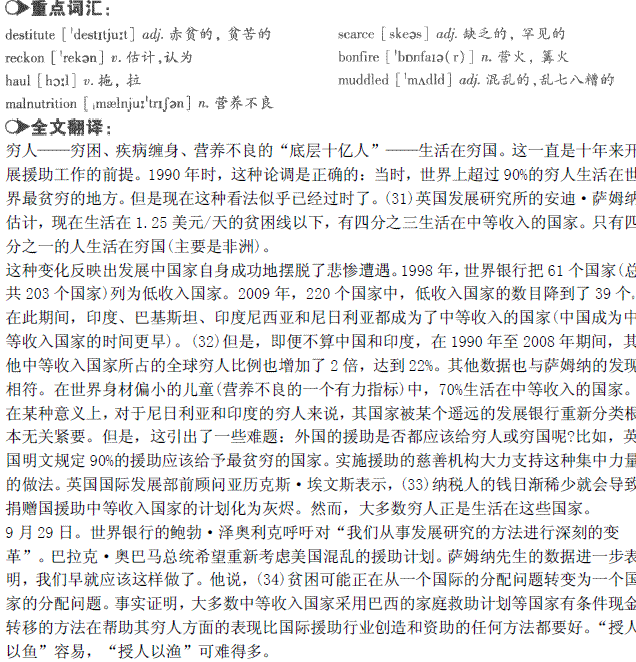第1题:
第2题:
第3题:
By citing the fact that "the number had shrunk to 39 out of 220" ( Line 3-4, Para.2), the author sug- gests that _______.( )
[A] the poverty in the middle-income countries is alleviated tremendously
[B] the life of children in the middle-income countries has become better
[C] poor people's living conditions don't change although the number reduced
[D] the financial aid to the world's poorest countries achieves great success
第4题:
第5题:
第6题:
第7题:
第8题:
The best title for the text is _______.( )
[A] The Problem of World Poverty
[B] Mr. Sumner's Research of Poverty
[C] The Poverty of Middle,income Countries
[D] The Financial Aid of the World Poverty

第9题:
第10题: